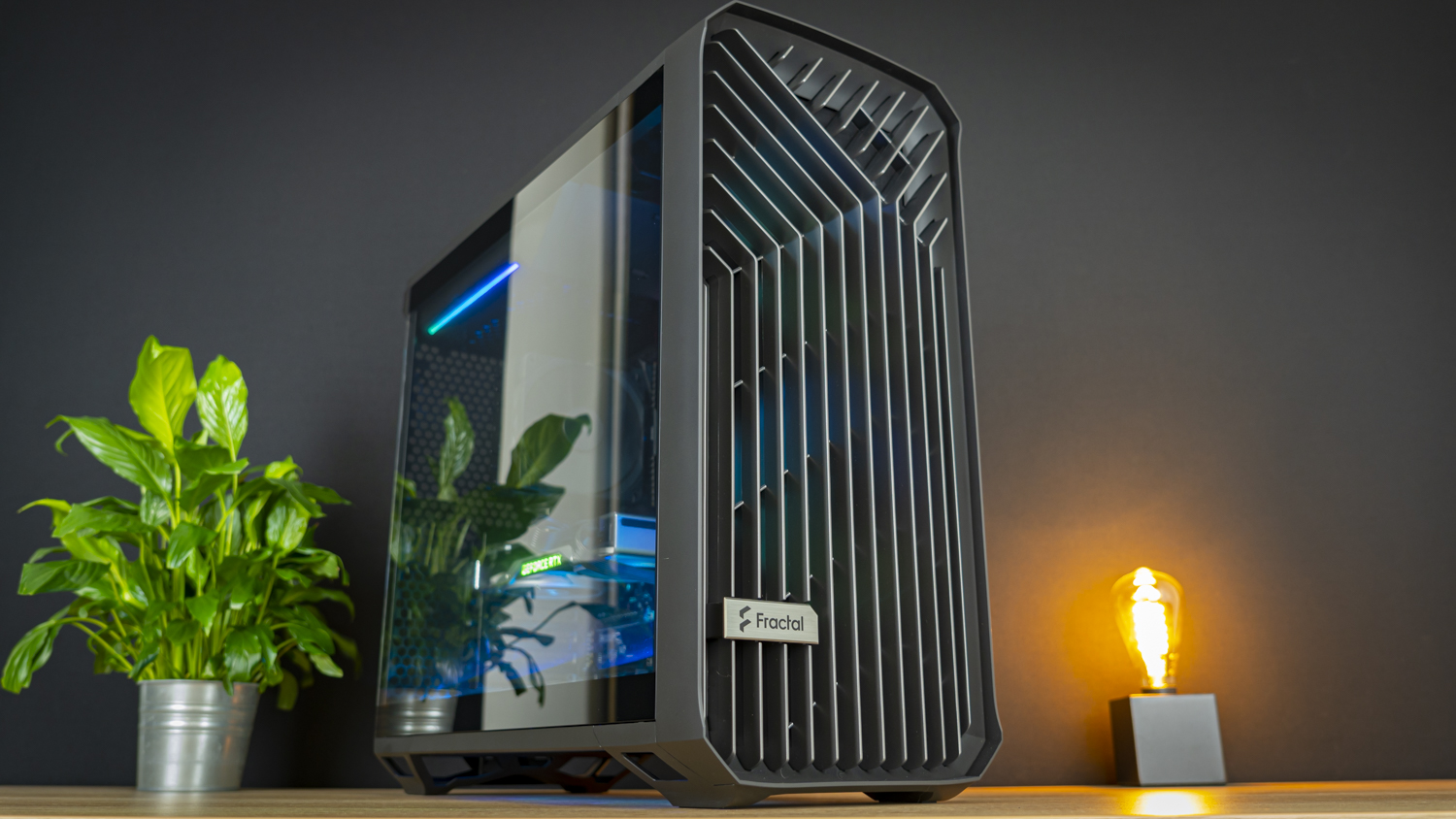Why you can trust Tom's Hardware
For thermal and acoustic testing, we are using the following software and settings:
| CPU Clock | i9 9900k: 4.6 GHz (46x 100MHz) @ 1.1v |
| GPU Clock | RTX 2070 Super: Stock |
| GPU Driver | Nvidia GeForce 445.87 |
| Case & CPU Fan Speeds | Stock Configuration 100%, Standardized CPU 100%, Case fans 50%. |
| GPU Fan Speeds | 75% |
Test Results
The included 140mm fans will spin as low as about 500 RPM, maxing out at around 1600 RPM, whereas the 180mm RGB fans will drop down to just 250 RPM at the low end and max out around 1150 RPM. These are good fans, capable of running very quietly, though they offer far more cooling power than is necessary at the top end.
Acoustic Results
For our acoustic tests, we run three scenarios: CPU full load, CPU and GPU full load, and an optimized idle. The CPU Full Load test runs the CPU and case fans at their maximum speed. For the CPU and GPU full load acoustic test we add the Nvidia RTX 2070 Super FE at 75% fan speed, because in practice it never runs at 100 percent and is far too loud when it does.
For the optimized idle, we run the GPU fan speed at 40 percent (the 2070 Super FE GPU does not have a Zero-RPM mode), and run the CPU and included case fans at the lowest speed they will spin at.
For the optimized idle result, the Torrent performs very well, matching the room’s noise floor. This makes it practically inaudible if you have a zero-RPM GPU. With the fans running at full blast, the Torrent runs quite loud, certainly living up to its name. However, as we’ll see in the next section where we test thermals, there really is no reason to ever run the case’s fans at this high speed –it’s likely topping them out at 1000 RPM for the 140mm fans and 800 RPM for the 180mm spinners is all anybody will ever need. In a way, that’s the beauty of a chassis with this many fans: Each fan doesn’t need to work as hard.
Thermal Results
For the thermal tests, all case and CPU fan speeds are set to 100 percent. The i9-9900K is pegged at a 4.6GHz clock at 1.1v on all cores to ensure consistent power consumption across test scenarios, and letting the GPU run at 75 percent fan speed enables it to maintain its power target while maintaining one set reasonable fan speed, so that the temperature is the only variable.
Fortunately for Fractal, the counterpoint to the high noise levels is chart-leading thermal performance. Of all cases I’ve tested, the Torrent jots down the lowest overall temperatures I’ve seen – it will truly handle anything you throw at it, thermally. The good news here is that you don’t need to run the fans at full speed when gaming – with this much thermal headroom, it’s easy to optimize for a quiet fan curve that offers just enough cooling.
Get Tom's Hardware's best news and in-depth reviews, straight to your inbox.
Conclusion
Fractal Design’s Torrent is a chassis unlike anything we’ve seen from the Swedish case maker, changing up the standard, sleek ATX recipe we’re used to from them and offering something a little more aggressive, with a strong focus on airflow.
In that way, the Torrent has succeeded: It offers great, striking looks that balance aggression well without sacrificing modern design, and it has more cooling performance than any other case I’ve tested.
But it isn’t perfect. Especially with the RGB version, there are a lot of cables to manage, and you’ll rely on your motherboard to power the lighting effects. That’s not inherently a bad thing, but there just isn’t really a good spot to dump all these cables. Normally I’d throw the slack into the PSU chamber at the bottom, but it’s at the top in this case and that’s too much of a detour, so you’ll have to spend more time than I did if you want things to look tidy – and you’ll want to because the side panel, also on the cable management side, is made of glass.
Next to that, there’s the matter of price. This version of the case costs a mighty $240, though skipping the RGB will save you $50. That puts it in premium chassis territory, and while its lavish inclusion of five large fans goes a long way to justifying the price, I feel this case lacks the design smartness found in most Fractal Design cases like the Meshify 2 and Meshify 2 Compact. It would also be great to see a smaller Torrent Compact that finds a way to save some overall desk space while making a bit more room for cable routing.
That said, if you like the Fractal Design Torrent’s looks and crave its cooling performance, this case is well worth considering. Just be ready to spend a little more time tidying up cables and setting up a modest fan curve if you want to keep things pretty and quiet.
Niels Broekhuijsen is a Contributing Writer for Tom's Hardware US. He reviews cases, water cooling and pc builds.




